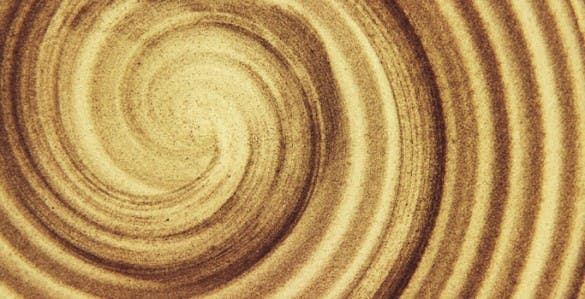Microscopic swirls from gold might be the key to protect your cash and credit cards in the future, making identity theft virtually impossible. Researchers at Vanderbilt University developed the “Archimedes spirals” and report that they produce four times more blue light per unit volume than currently existing frequency amplifiers; they could be printed on currency, ID cards and pretty much everything that’s important to prevent counterfeiting.

Students and professors from Vanderbilt University created gold spirals about the size of a dime… and then shrunk them down 6 million times – up to the point where they’re invisible to the naked eye, but exhibit special optical properties.
“They are certainly smaller than any of the spirals we’ve found reported in the scientific literature,” said Roderick Davidson II, the Vanderbilt doctoral student who figured out how to study their optical behavior. The spirals were designed and made at Vanderbilt by another doctoral student, Jed Ziegler, now at the Naval Research Laboratory.
When the spirals are shrunk down to a size comparable to that of lightțs wavelength, they develop unusual optical properties; notably, when illuminated with infrared light, they emit blue light. The spiral’s arms are so small that the electrons are forced to move along the spiral and then driven towards the center, so that some of them emit blue light two times. This phenomenon is called frequency doubling or harmonic generation.
“This is similar to what happens with a violin string when it is bowed vigorously,” said Stevenson Professor of Physics Richard Haglund, who directed the research. “If you bow a violin string very lightly it produces a single tone. But, if you bow it vigorously, it also begins producing higher harmonics, or overtones. The electrons at the center of the spirals are driven pretty vigorously by the laser’s electric field. The blue light is exactly an octave higher than the infrared – the second harmonic.”

Because this effect is so strong, researchers propose that they can effectively be used to protect currency against counterfeiting. If you have the available technology and know-how, the spirals are easy and cheap to create, but potential forgers would have neither available.
“If nano-spirals were embedded in a credit card or identification card, they could be detected by a device comparable to a barcode reader,” said Haglund.
But it’s not just IDs and money that could benefit from this – drugs, chemicals and explosive could also be identified through golden spirals.


